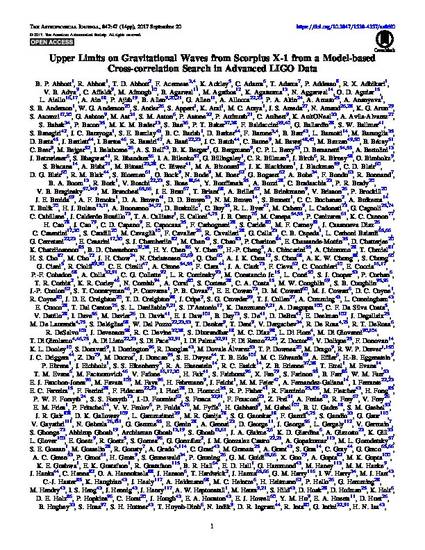
We present the results of a semicoherent search for continuous gravitational waves from the low-mass X-ray binary Scorpius X-1, using data from the first Advanced LIGO observing run. The search method uses details of the modeled, parametrized continuous signal to combine coherently data separated by less than a specified coherence time, which can be adjusted to trade off sensitivity against computational cost. A search was conducted over the frequency range 25–$2000\,\mathrm{Hz}$, spanning the current observationally constrained range of binary orbital parameters. No significant detection candidates were found, and frequency-dependent upper limits were set using a combination of sensitivity estimates and simulated signal injections. The most stringent upper limit was set at $175\,\mathrm{Hz}$, with comparable limits set across the most sensitive frequency range from 100 to $200\,\mathrm{Hz}$. At this frequency, the 95% upper limit on the signal amplitude h 0 is $2.3\times {10}^{-25}$ marginalized over the unknown inclination angle of the neutron star's spin, and $8.0\times {10}^{-26}$ assuming the best orientation (which results in circularly polarized gravitational waves). These limits are a factor of 3–4 stronger than those set by other analyses of the same data, and a factor of ~7 stronger than the best upper limits set using data from Initial LIGO science runs. In the vicinity of $100\,\mathrm{Hz}$, the limits are a factor of between 1.2 and 3.5 above the predictions of the torque balance model, depending on the inclination angle; if the most likely inclination angle of 44° is assumed, they are within a factor of 1.7.
Available at: http://works.bepress.com/michele_zanolin/13/
